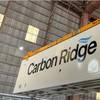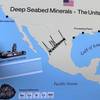Five minutes with Chia Yoo Soon, General Manager, Finished Lubricants – Marine, Chevron Marine Lubricants
OK. Full disclosure. We spent more than ‘five minutes’ on the phone with Chia Yoo Soon, General Manager, Finished Lubricants – Marine, Chevron Marine Lubricants. But given that we are based in New York and he is based in Singapore, the time difference mandated an efficient conversation for both.
Without overstating the obvious, ship owners are under tremendous pressures. A relentless regulatory hammer continues to pound out new and ever stricter environmental and emission rules, while at the same time many sectors are in the midst of a historic and prolonged slump. Relief can be hard to find, and owners increasingly turn to their suppliers for answers. So the leader of Chevron’s global marine lubricants division seemed a natural for topical insight and perspective regarding the new IMO fuel rules coming in 2020.
I have your biography, but please briefly describe how you came to a career in the lubricants business.
Chevron believes in investing in its people, and it is common to move people across business units for career and leadership development. Lubricants are not new to me. Thirty-one years ago I started my career in the oil industry in the lubricants business (in automotive and industrial lubricants).
What brought you to this position in maritime?
The move came about as a part of a wider leadership change within Chevron in 2016, and a point was to provide more focus to the Asia Pacific region in terms of marine. Chevron deceided to move the global marine leadership role, which I hold, to Singapore in 2016.
What are some of the main differences and similarities in the lubricants business when comparing different transport modes?
The main difference is the product range. Aviation is relatively straight forward and simple: it’s jet fuel. On the marine lubricant side there is a lot more complexity in the product range, and likewise going forward on the marine fuel side I think we will be seeing much more complexity within alternative marine fuels in the future.
There are similarities to the aviation and marine business, specifically to the way in which airlines and ship owners procure – centrally and globally: they procure centrally for products to be delivered on a global basis. Both are busiess-to-business customers involving key account management. So while the aviation and marine products may be different, the way that we manage them within Chevron is similar.
Obviously many maritime sectors today are challenged. When you look at the world of maritime, what do you see?
Since I came into this role 18 months ago I have had the chance to sit with and meet many customers around the world. Among the industry veterans that I’ve spoken to, this is clearly the longest down-cycle in the shipping industry in recent history. The consensus seems to be that we have reached the bottom; but the outlook for the recovery is mixed.
Lately we have seen some positive reports on certain segments and regions, and some encouraging third quarter earnings reports from publicly listed companies.
We see slow recovery in the global economy, leading to a positive outlook for the maritime industry as a whole. We are seeing some shipping companies investing in new builds, although there remains the view that there is still too much capacity in the industry as a whole.
While no one region stands out among the rest, we see Asia as showing the most optimism globally.
That said, the global energy markets have been in a long, deep slump for nearly four years. How has this energy swoon impacted the lubricants side of the business?
The oil industry fluctuation is also in a prolonged down cycle, with companies adjusting to the ‘new normal.’ But the oil downturn has not been as bad as the shipping slump.
Even though crude oil prices have remained low, we are seeing increases in lubricant component costs. As you know, lubricants are comprised mainly of two major components, base oils and additives. But these are not directly correlated with crude oil prices. Base oil has not followed the prolonged down cycle, and in fact have been increasing steadily over the last few years. Combined with other increased supply chain costs, it continues to make for a difficult market.
However, Chevron is not alone in feeling the adverse affects of the current market. We are responding by offering added value for our customers. We appreciate that our customers are feeling the pinch in the shipping industry, so we have continued developing products that are fit for purpose. In 2018 we will expand our services as well, to maximize the use of Chevron lubricants by introducing a range of features that are designed to help our customers evaluate the total cost of ownership and operations, monitoring consumption and helping to protect their most valuable asset.
So what exactly will the industry see new from Chevron in 2018?
The key term here is partnership, as we work with our customers to monitor the lubricants, predominately on the cylinder oil side. We will help them to monitor their feed rate, a new service to help them optimize the overall cost of ownership of the lubricants. There will be a service to monitor and use database information for analysis, our tech team will help to optimize the use of cylinder oil, which is a major chunk of their operating cost, besides bunker fuel.
When you look at the drivers for the marine lubricants today – energy efficiency, emissions reduction, alternative fuels, cost, performance – which one do you see as the biggest driver for the development and delivery of lubricants to the marine market?
We don’t see any one driver – from energy efficiency to emissions reduction to alternative fuels – as bigger than the other, but if you stand back and look at drivers in totality, most likely the 2020 IMO low sulphur regulation is going to be the biggest driver going forward, affecting all of the factors just mentioned in one way or the other.
Can you give an example of how one of these drivers has had a material impact on your business?
The demand for energy efficiency has led to new engine design and practices, such as slow steaming, which led to conditions such as cold corrosion that we’ve never seen before. We had to come with new products that meet the new challenges. Modern lubricant development has to be agile and keep up with changing demands. Our primary focus is to respond with solutions to new challenges quickly and cost efficiently.
It is evident that change today is coming more rapidly, and for us, having the right product range, approved by the OEM’s, is essential to maintain our position in the market.
With that, can you give an overview of your investment in research and development to keep pace?
A few years back the cylinder oil range was pretty straight forward. There was 70BN that would meet the requirement of most ships around the world. We saw, with the introduction of slow steaming and new engine design, many new issues cropping up. This led to – in addition to new alternative fuels such as LNG, methanol and hybrid fuels – the need for Chevron to invest in product development and technology to come up with a product range that can meet all of the different fuel and BN requirements in the market.
Going back about 10 years there was a requirement for only one cylinder oil. Today, with the ECA and SECA zones and all of the new fuels, you are looking at a cylinder oil range from 25BN to 140BN. That is where the investment is going, in coming up with the products that can meet the requirements and help our customers solve the problems associated with new legislation and new fuels.
So I think it is safe to say that Chevron is not a party to the ‘one size fits all’ solution.
Thank you, because that in a nutshell sums up our product strategy. We do not believe that one product can meet all requirements in the current or future market, especially post-2020 IMO.
New fuels present challenges and opportunities. There are many schools of thought on fuels of the future. What do you see as the emerging trend?
The range of fuels is growing, and it adds complexity. It is a challenge and an opportunity. Before I address the fuel of the future, we are proud to supply the largest fleet of methanol fuelled vessels with our lubricants, and we are also on the majority of the LNG fuelled two-stroke vessels operating today.
With 2020 approaching, and with the ECA and SECA zones, alternative and hybrid fuels are becoming more important, but cost and availability is still an issue. I think it’s clear that LNG is a clean fuel that will undoubtedly be one of the future forerunners, as cost-of-conversion and availability is achievable.
The issue with LNG is that bunkering infrastructure currently is quite limited, however we are seeing increasing investment in this infrastructure globally. In Chevron we are preparing now for a more widespread uptake in the technology. Then you have to look at scrubbers, or exhaust gas cleaners, and these are serious options as well. The retrofit market has been limited, but when you look at the newbuild market, scrubbers built-in are more prevalent. The only issue really is the high capital investment for these scrubbers, particularly in today’s shipping industry.
I think the jury is still out as to what will be the ‘fuel of the future,’ but increasingly we will see more and more legislation on emission reduction. Cleaner fuels will probably be the way to go.
IMO 2020 and the pending new fuel rules. In brief, how are you advising ship owners?
Most of our clients are in varying stages of readiness for 2020. Some customers that have taken a position in terms of fuels or, alternatively like you see in the cruise sector, which has invested in scrubbers. We’re working hard to help them make key decisions, mainly in regards to fuel choice after 2020. At Chevron Marine Lubricants we are ready for 2020 with our range of cylinder lubricants, as well as trunk piston engine oils, that can support the fuel decisions that our customers decide to take. We are a long way ahead on two-stroke LNG testing, and we have more experience than most in terms of methanol applications.
The maritime industry is ‘global and mobile.’ From Chevron’s perspective, what are the keys to building and maintaining an effective, efficient and profitable distribution and service network?
Our delivery network is in more than 700 ports worldwide, and we are recognized as being world-class by our customers for providing solutions; I want to emphasize the word ‘solutions.’ As the marine arm of a global lubricants business in Chevron, we are supported by a global supply chain organization to ensure reliable supply to our network. We made a conscious decision to not centralize our customer service teams in call-centers, rather we have left our CSR teams in the regions to maintain relationships with local owner operators, in most cases in the local language. This helps to form a long-lasting relationship and the ability to understand our customer’s business. We build partnerships, and it is our goal to be the partner of choice.
Every business, every position has its challenges. What is your biggest challenge, and how are you addressing it?
The biggest challenge is to lead the organization to navigate this current down cycle, and to position Chevron Marine Lubricants for growth during the impending recovery. As we discussed, the maritime industry is changing rapidly, whether it is through environmental legislation, industry consolidation, digitalization ... perhaps even disruptive technologies. My job is to make sure our organization is agile, and that we can quickly adapt and respond to changes in the industry.












